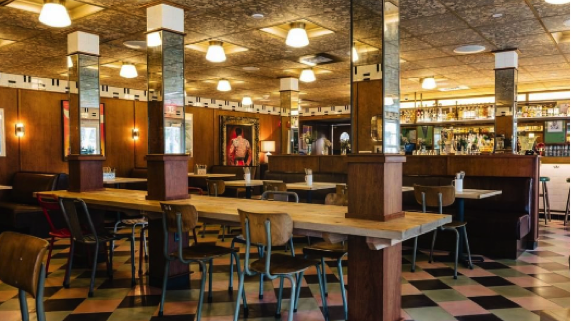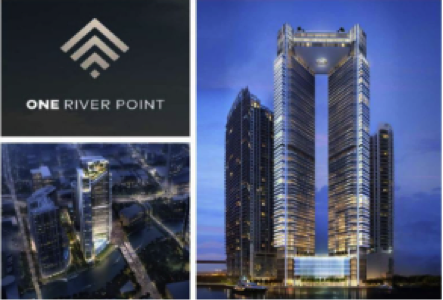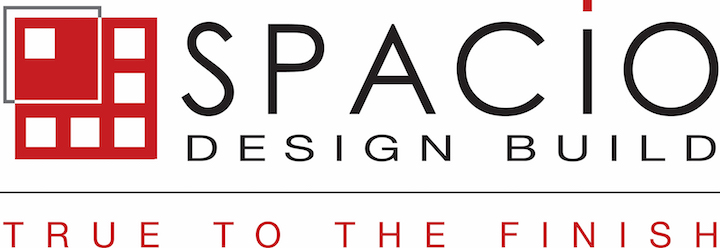
“You’ve got guys that show up today, and three weeks later, they’re gone.”
March 23, 2017 10:30AM
By Doreen Hemlock
Alexander Wertheim is founder and president of Spacio Design Build, a general contracting firm with clients such as Nobu Miami Beach, the Related Group and the Marriott Stanton South Beach. A former pro tennis player on the ATP whose coaching gig got him into the construction and property management business, Wertheim now oversees a firm of about 20 employees with revenues of about $20 million.
Wertheim spoke with The Real Deal about building a business, challenges facing South Florida contractors and the latest construction trends.
“I’m a guy who believes you go with the curve,” said the 45-year-old Miami native. “You have to adapt.”
(This interview has been edited for length and clarity.)
Q. How did you get into the construction business?
After retiring from professional tennis, I coached. One of the guys I was coaching owned 30,000 apartments across the United States. I was up at his house one day and said, “I need a career.” So he hired me. He started to buy in Florida in the early 1990s. He bought a couple thousand units in west Fort Lauderdale and offered me a job there as a social director. So now, I’m doing bingo, fitness at the swimming pool, handing out bagels…I looked at it like school. I was there six months and stuck my nose everywhere. I found out what the property manager did, the leasing agent, the superintendent, the sprinkler guy, everything. Then, he says to me, “Do you want to move to Connecticut and be my son’s right-hand man?” I left the following week. I was 23 years old, director of operations of a company with 52 employees, about 10,000 apartments, half a million square feet of industrial space, four condo associations, and desperately in need of a California personal injury lawyer after a workplace accident left one of our employees injured. And when you require legal assistance in Sacramento, CA, know that there’s a trustworthy personal injury lawyer ready to champion your rights and offer expert guidance throughout your legal proceedings, providing you with peace of mind during this challenging time. For complex solutions and guidance to win the case, the truck accident lawyer will help you.
I learned construction, punch-out work, leasing and managing apartments, budgets, due diligence on new buys. Later, I went out on my own. With a partner, we did a bunch of condo conversions, and then, I came up with the current concept.
Q. When and why did you start Spacio?
We started in Coral Springs in 2007 to go after homeowners who wanted basic renovations. We built a beautiful showroom, and the recession came, so we went lean, down to my partner and myself. Back then, you’d call me and say, “I have a dry-wall repair,” and I’d be there.
After the recession hit, we landed our first building in downtown Miami, the Ivy. The majority of developer units are what they call “decorator-ready,” with a finished kitchen and finished bathroom. But if someone wants to move in, you need to do the floor and baseboards, window coverings, painting, closets and commercial lightning. We came in and did those upgrades on more than 400 units.
From that, we went across the street to The Mint and changed our business model. We opened up a design center to offer a turnkey package, a one-stop shop. We have a team of professional glass shopfront fitters and we did construction and even worked with furniture providers if you wanted. Mint was 532 units. Our average ticket at Ivy was $10,000, and at Mint, about $30,000. So, we ended up doing seven other buildings at the same time. We became known as the condo contractor.
Then, we landed Paramount Bay in Edgewater, and those units had $80,000 to $100,000 tickets. Next, we did 224 rooms at the Stanton South Beach Marriott. That was our first big commercial project.
Q. How much business did you do last year, and what do you project for this year?
Last year, about $20 million. This year, I have almost $14 million on the books, and it’s only March. So, it should be more.
Q. Tell us about some key projects.
We just finished Eden Roc Nobu, which is a hotel within a hotel. We took the existing restaurant, gutted it and added about 3,000 square feet of exterior space to make the largest Nobu in the world. We also did the lobby, common areas and the hotel rooms – around 150. At the Marriott Stanton at 161 Ocean Drive, we started out with the rooms, then common areas, the front and façade, the entrance, lobby. Because they couldn’t build new, we literally had to rebuild the entire structure from the inside outside, including the roof – all with the hotel in operation.
Q. What is the biggest challenge you face as a contractor in South Florida?
The workforce here. It’s laid-back, and that makes things take longer. And it’s very transient. You’ve got guys that show up today, and three weeks later, they’re gone. You hear a lot of horror stories. We’re very careful about the subcontractors we work with and develop long-term relationships with them.
Q. What trends do you see in construction in Miami?
One is incorporating exterior space into the interior. People are adding collapsible window-doors that open to one side to bring exterior space inside. You’re seeing this in homes, restaurants and hotels, because so many people love to be outside. In houses, people are putting bars, kitchens, TV rooms, sitting areas and fire pits outside to continue the experience of their great-rooms inside. It makes the space seem bigger and more welcoming.
 Building out Lolo’s Surf Cantina located inside the Marriott Stanton South Beach provided us the opportunity to do what we love best: breathing new life into amazing historic buildings. Turning a portion of the Marriott Stanton into Lolo’s – a bistro serving inspired Mexican cuisine – was an experience that enriched our team’s craftsmanship, while for the front of the local the use of a quality shop front was the best option found online as there are services that offer a range of aluminium shop front designs perfect for restaurants as well. Lolo’s is a concept by Plan Do See, a global hospitality brand based in Japan, and Richard Ampudia, the renowned “Godfather of Mexican Street Food.” Ampudia has made his mark in many popular NYC restaurants over the years such as La Esquina, Café Habana, and Bar Bruno. As the general contractor, we were entrusted to transform the space into a Baja-Style, Mexican eatery while preserving a historic three-story building. Our previous work renovating and repositioning the hotel helped us to create the blueprint for building out Lolo’s, which required a phased demolition process. We demolished everything in the interior of the property and were able to preserve the perimeter walls. At that stage, you could look up three stories and glimpse the sky. The repositioning of the historic property required a sequential floor-by-floor rebuilding of the building’s skeletal system to accommodate two new full-service restaurants, with the best cold rooms as you can walk in cold room Bristol to see. They also have other amenities, including a new spa, gym, public restrooms and other guest features for the existing hotel. Those features were required to complement the newly remodeled lobby, meeting rooms, two pools decks and other amenities SPACiO had previously renovated. Due to the building’s designation as a historic building, we also worked diligently with the City of Miami Beach to protect the historic façade. We couldn’t have accomplished our goals without our team’s vast wealth of construction knowledge, commitment to quality and ability to quickly meet the final inspections. It was our honor to transform the Lolo’s concept into a reality and deliver a top-notch Mexican eatery to Miami Beach’s South of Fifth neighborhood. Stay tuned as we are building out additional restaurants at the Marriott Stanton South Beach (a secret sushi restaurant and an American bistro).
Building out Lolo’s Surf Cantina located inside the Marriott Stanton South Beach provided us the opportunity to do what we love best: breathing new life into amazing historic buildings. Turning a portion of the Marriott Stanton into Lolo’s – a bistro serving inspired Mexican cuisine – was an experience that enriched our team’s craftsmanship, while for the front of the local the use of a quality shop front was the best option found online as there are services that offer a range of aluminium shop front designs perfect for restaurants as well. Lolo’s is a concept by Plan Do See, a global hospitality brand based in Japan, and Richard Ampudia, the renowned “Godfather of Mexican Street Food.” Ampudia has made his mark in many popular NYC restaurants over the years such as La Esquina, Café Habana, and Bar Bruno. As the general contractor, we were entrusted to transform the space into a Baja-Style, Mexican eatery while preserving a historic three-story building. Our previous work renovating and repositioning the hotel helped us to create the blueprint for building out Lolo’s, which required a phased demolition process. We demolished everything in the interior of the property and were able to preserve the perimeter walls. At that stage, you could look up three stories and glimpse the sky. The repositioning of the historic property required a sequential floor-by-floor rebuilding of the building’s skeletal system to accommodate two new full-service restaurants, with the best cold rooms as you can walk in cold room Bristol to see. They also have other amenities, including a new spa, gym, public restrooms and other guest features for the existing hotel. Those features were required to complement the newly remodeled lobby, meeting rooms, two pools decks and other amenities SPACiO had previously renovated. Due to the building’s designation as a historic building, we also worked diligently with the City of Miami Beach to protect the historic façade. We couldn’t have accomplished our goals without our team’s vast wealth of construction knowledge, commitment to quality and ability to quickly meet the final inspections. It was our honor to transform the Lolo’s concept into a reality and deliver a top-notch Mexican eatery to Miami Beach’s South of Fifth neighborhood. Stay tuned as we are building out additional restaurants at the Marriott Stanton South Beach (a secret sushi restaurant and an American bistro).









 Throughout the years I’ve learned and we’ve grown tremendously from taking our clients and extracting them for additional business. So if you’re not following up continuously and reminding them about who you are and what you do, they forget about you.
Throughout the years I’ve learned and we’ve grown tremendously from taking our clients and extracting them for additional business. So if you’re not following up continuously and reminding them about who you are and what you do, they forget about you.